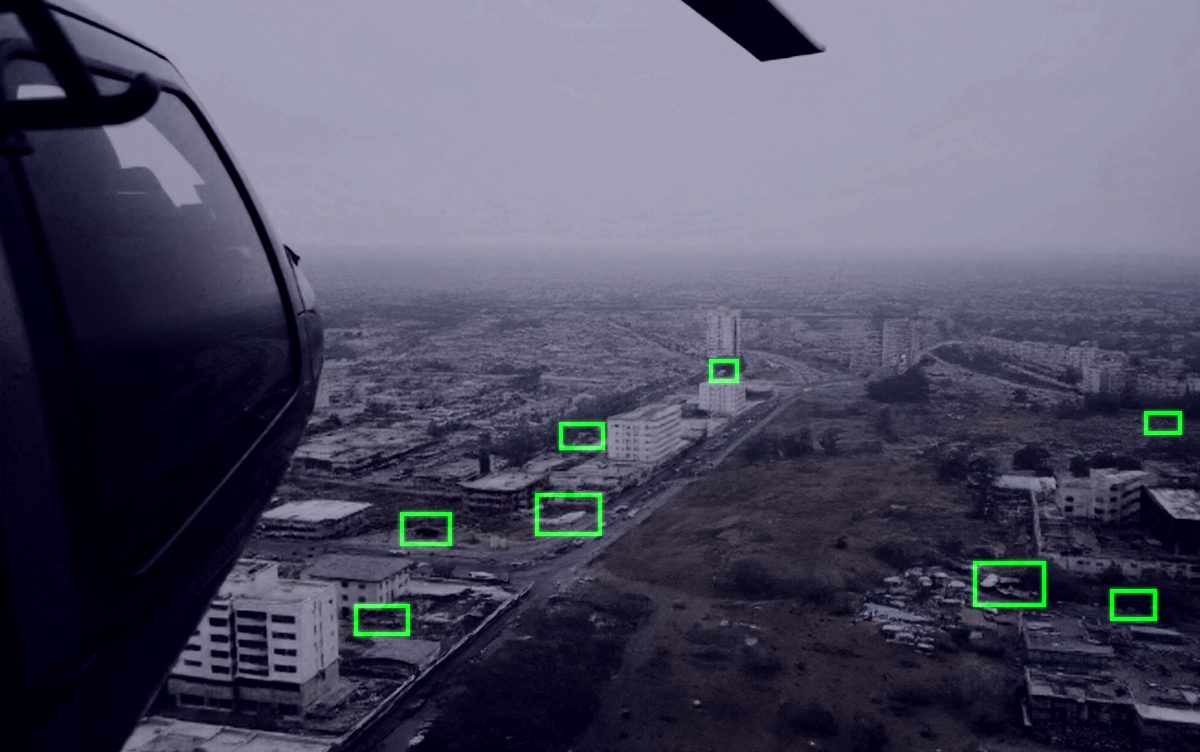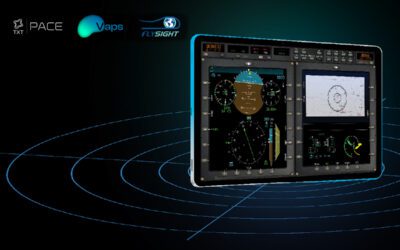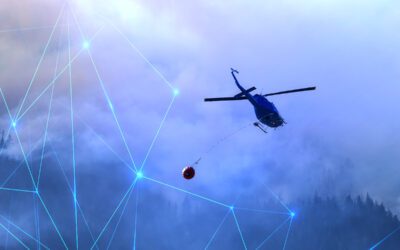For a military operation to be successful, it is essential to identify the target correctly. The surge in demand for automatic target recognition for military use has led to the development of turnkey console and mission solutions in recent years, especially with the advent of advanced systems such as Enhanced Reality and AI. Many believe that automatic target recognition will change the battlefield of tomorrow, putting surveillance, data gathering and target recognition into the hands of highly advanced software and artificial intelligence.
In this article, we look at the potential for using military automatic target recognition systems and how EO sensors make the next generation of ATR systems far more accurate and reliable. We’ll examine the benefits of ATR and their uses and look in more detail at the role of systems such as FlySight’s innovative OPENSIGHT solutions as part of 21st-century military operations.
What is Automatic Target Recognition?
Automatic Target Recognition is a highly advanced toolbox that uses a combination of sensors and algorithms to detect, classify and identify targets. While it has uses in civilian operations and law enforcement, it is most commonly applied to military targets. The key of ATR is that it doesn’t rely on a human being to carry out the initial identification, but instead uses highly advanced software and electronic processing.
Once a target has been detected, the algorithm can then classify it (for example, a combatant or non-combatant target) or identify correctly an object or target (such as a hostile vehicle).
The sensors used in military automatic target recognition include everything from radar and sonar to multi-spectral and hyperspectral cameras. Algorithms use machine learning, spectral analysis and AI applications to dissect and analyse any data in real-time, feeding back to the operations team confirmation of a specific target in seconds.
How it works
ATR uses a four-step process:
- Data Collection: Sensors collect data on potential targets.
- Feature Extraction: The system identifies key features in the data that are essential for identifying and confirming targets.
- Pattern Recognition: Machine learning algorithms use these features to classify the target.
- Matching and Decision Making: The algorithm then completes the analysis by comparing the identified features to known patterns. Using AI, the algorithm can then decide what the target is. To ensure no errors are made, a human operator will finalise and double-check this.
The use of EO sensors
Electro-optical (EO) sensors are integral to automatic target recognition because they can detect and convert light into electronic signals across different spectra.
EO sensors play a role in each of the data collation and processing features. They capture images across different spectrums, including infrared and ultraviolet. This is particularly relevant during nighttime operations when visible light is drastically reduced. They can also be incorporated into systems that provide clearer imaging in adverse weather, such as FlySight OPENSIGHT’s Mission Console’s Fog Suppression and dehazing features.
During preprocessing, EO sensors can enhance image quality and reduce background ‘noise’, making target identification much easier.
Once the images are processed, feature extraction algorithms within the EO sensors enhance significant factors such as number plates on vehicles or even the facial features of a human target. Anomalies such as buildings that don’t match the plan footprint or new or unusual constructions can also be identified and highlighted.
Using machine learning algorithms, SO sensors can also play a key role in classification and pattern matching against known and verified information. This helps narrow the target identification and will ultimately lead to a more precise decision as to whether an object is a target.
The general benefits of automatic target recognition for military units
Military operations have relied on human data gathering for hundreds of years, so why is automatic target recognition for military use now so prevalent?
The simple reason is that it provides a multi-layered data analysis tool that provides accurate real-time results. Verified by human operators, it gives units a broad view of their surroundings, including information that cannot be seen with the naked eye, as well as augmented layers of data. An example would be in an urban landscape where Enhanced Reality could provide a data layer giving precise addresses and occupants based on civil records.
In high-intensity and combat situations, it can also reduce the chances of errors through incomplete data and prevent the misidentification of a target. This is crucial in a combat zone, where a simple misidentification of a target vehicle, for example, could lead to a loss of innocent lives or, conversely, put the ops team in danger.
How automatic target recognition is used in military scenarios
Automatic Target Recognition plays a crucial role in military operations by enhancing the efficiency and accuracy of identifying potential targets.
Surveillance and Reconnaissance: ATR systems are deployed on drones and surveillance aircraft to scan large areas, identifying and tracking enemy movements. They can quickly cover vast areas, making them a highly valuable tool in surveillance and target detection.
Targeting: ATR supports precision targeting systems by enhancing the accuracy of missiles and guided munitions. Cruise missiles equipped with ATR can identify and strike specific targets based on their pre-programmed characteristics. In a highly fluid theatre, these parameters can be altered in response to new information in real-time.
Situational Awareness: ATR can create comprehensive battlefield maps by identifying and classifying threats depending on criteria laid down by the mission controllers. If targets meet the criteria, they are identified quickly, even if mobile. The information is then shared with commanders to allow them to make strategic decisions or to change tactics based on new information received.
Unmanned Systems: ATR is integral to the operation of unmanned aerial vehicles (UAVs) and autonomous ground vehicles. Using these vehicles means that the target can be engaged without direct human intervention, reducing the risk to the operations teams. This is particularly relevant to drone strikes against identified and verified targets.
Threat Detection: ATR systems help in detecting potential threats. These include concealed weapons or explosives. They achieve this by recognising characteristic features in various environmental conditions, as well as any notable changes that could indicate a potential threat.
Other applications
Automated target recognition for military use is an integral part of modern warfare, so it is only fitting that it should be included in military training. ATR’s advantage is that its equipment is often already familiar to the operator, especially when it comes to support systems such as mission console software, so its use is fairly intuitive. This reduces training time and costs, making it a more practical everyday solution for military personnel and operational considerations.
ATR also has uses beyond the military arena, particularly in search and rescue applications and law enforcement surveillance and intelligence operations. For police aerial units, ATR can identify and lock onto a moving target vehicle, allowing the aerial unit operators to direct ground-based personnel towards the target without putting civilian drivers at risk with a high-speed ground pursuit.
FlySight’s OPENSIGHT ATR
Delivering a working combination of detection, classification and identification, FlySight’s OPENSIGHT Automatic Target Recognition tool provides military and civilian operators with a training environment for image and video processing of any EO sensor data. Using cutting-edge Deep Learning and compatible with OPENSIGHT’AI and Enhanced Reality tools, our ATR is both a training tool for operators and a highly useful tool in the field.
OPENSIGHT automatic target recognition could be fully integrated into existing and with AI processing offering a faster analysis of the data.
You can find out more about our ATR here by watching our in-depth video demonstrating the system in operation. Or get in touch to find out more about the OPENSIGHT automatic target recognition solution by talking to one of our expert advisors today.
READ ALSO: automatic target recognition, use cases in different scenarios





